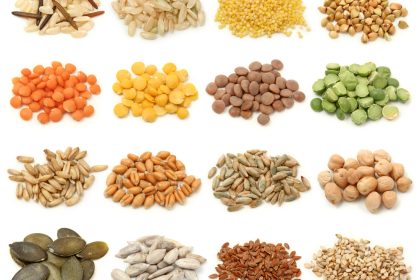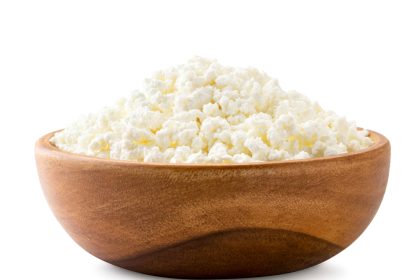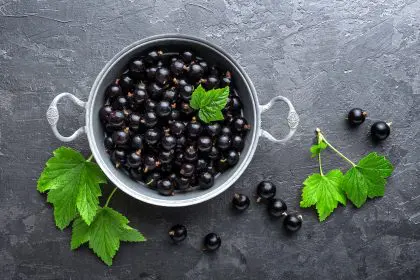Certain food combinations create unique metabolic responses that standard calorie counting fails to capture. When specific nutrients interact within your digestive system, they can trigger enhanced thermogenesis – the process by which your body generates heat and burns calories. Unlike typical diet approaches focusing solely on restriction, strategic nutrient pairing leverages your body’s natural biochemistry to optimize fat utilization while preserving muscle tissue.
The metabolic advantage comes from complementary compounds that enhance each other’s effects when consumed together. While no single food triggers immediate weight reduction, specific combinations significantly amplify your body’s natural fat-burning mechanisms through several biological pathways. This synergistic effect accelerates the conversion of stored fat into usable energy while helping regulate the hormones that control hunger and satiety.
Understanding these powerful food interactions allows for meal planning that maximizes your natural metabolic potential without extreme measures or uncomfortable hunger. By timing these combinations strategically throughout the day, you create sustained metabolic benefits that traditional diets simply cannot achieve through calorie restriction alone.
The protein-fiber matrix that transforms metabolism
At the core of this approach lies the protein-fiber matrix – a powerful pairing that fundamentally alters how your body processes energy. High-quality protein sources combined with specific fiber types create a unique digestive environment that simultaneously slows carbohydrate absorption while accelerating fat mobilization from storage sites throughout your body.
The thermic effect of protein requires substantial energy expenditure for digestion – approximately 25-30% of its caloric content compared to just 6-8% for carbohydrates and 2-3% for fats. When combined with soluble fiber, this digestive process extends further, creating prolonged energy expenditure while stabilizing blood sugar. This combination prevents the insulin spikes that typically promote fat storage while activating glucagon, the hormone responsible for releasing stored fat for energy use.
Practical applications include pairing lean protein sources like wild-caught fish, organic poultry, or plant-based options with high-viscosity fibers found in foods such as ground flaxseeds, chia seeds, psyllium, and certain fruits. The thick gel formed during digestion extends satiety while creating the metabolic conditions that favor fat burning over storage.
Thermogenic spice combinations that amplify calorie burning
Certain spice combinations dramatically increase metabolic rate when consumed with specific macronutrients. These thermogenic enhancers activate multiple pathways involved in heat production and fat oxidation, creating measurable increases in calorie expenditure that persist for hours after consumption.
Capsaicin-containing spices like cayenne, paprika, and various chili peppers activate TRPV1 receptors that trigger catecholamine release, directly stimulating brown adipose tissue – specialized fat cells that generate heat instead of storing energy. When combined with black pepper’s piperine component, absorption increases while activation time extends, creating sustained metabolic elevation.
The synergy intensifies when these spices accompany protein-rich foods with medium-chain triglycerides (MCTs). This combination creates a powerful thermogenic effect that can increase energy expenditure by 15-25% for several hours post-consumption. Practical implementations include adding cayenne and black pepper to meals containing coconut products, grass-fed dairy, or MCT oil supplements alongside protein sources.
For those sensitive to spice heat, alternative combinations using ginger, cinnamon, and cardamom create similar effects through different biological pathways. These spices improve insulin sensitivity while activating internal temperature regulation, particularly when consumed with protein-rich breakfasts or pre-exercise meals.
The timing protocol that maximizes fat mobilization
Beyond specific combinations, the timing of these pairings dramatically influences their effectiveness. Strategic consumption creates metabolic advantages by aligning with your body’s natural hormonal rhythms and energy utilization patterns throughout the day.
Morning consumption of protein-fiber matrices proves particularly effective by capitalizing on naturally elevated cortisol levels that already favor fat mobilization. This timing extends the natural fasting period that occurs during sleep while providing essential nutrients that prevent muscle catabolism. The resulting metabolic state maintains fat-burning pathways active throughout the morning hours when many traditional breakfasts would otherwise trigger insulin-dominated storage modes.
Pre-exercise implementation of thermogenic combinations amplifies workout effectiveness by pre-activating fat-burning mechanisms before activity begins. This preparation ensures your body preferentially utilizes stored fat for energy rather than relying primarily on recently consumed carbohydrates. The practical approach involves consuming these combinations approximately 30-45 minutes before physical activity to optimize nutrient timing with exercise-induced fat oxidation.
Evening adjustments focus on combinations that support overnight recovery while maintaining metabolic activity during sleep. Protein sources containing higher levels of tryptophan paired with small amounts of slow-digesting carbohydrates support quality sleep while providing the necessary amino acids for overnight tissue repair without excess energy that would otherwise be stored.
The fat-mobilizing phenolic combination effect
Plant compounds containing specific phenolic structures create powerful synergies that influence how fat cells respond to metabolic signals. These bioactive compounds modify gene expression in adipose tissue, upregulating proteins involved in thermogenesis while downregulating those that promote fat storage.
The most effective combinations pair catechin-rich foods with those containing specific flavonoids that inhibit COMT (catechol-O-methyltransferase) – an enzyme that would otherwise degrade catechins before they can fully activate fat-burning processes. This pairing extends the metabolic benefits while creating effects that neither compound could achieve alone.
Practical implementations include combining green tea or dark chocolate with citrus peel compounds, certain berries, or specific herbs like rosemary. When consumed alongside protein-rich meals, this combination creates a multi-hour window of enhanced fat mobilization. The effect strengthens with consistent implementation, as these compounds gradually modify gene expression patterns in fat cells to favor energy release over storage.
For those preferring different flavor profiles, alternative combinations using specific anthocyanins from purple foods paired with ellagic acid sources create similar metabolic advantages through parallel biochemical pathways, offering variety while maintaining effectiveness.
The blood sugar stabilization technique that prevents fat storage
Critical to sustained weight management is preventing the blood sugar fluctuations that trigger fat storage hormones. Specific food combinations create a physiological environment that stabilizes glucose levels while optimizing fat utilization during the post-meal period when most dietary fat would typically be directed toward storage.
The approach combines moderate amounts of healthy fats containing specific fatty acid profiles with foods rich in particular organic acids. This combination slows gastric emptying while temporarily altering intestinal permeability to carbohydrates, creating a gradual nutrient release that prevents glucose spikes. Without the corresponding insulin surge, consumed fats remain available for immediate energy utilization rather than storage.
Practical applications include pairing avocado, olive oil, or omega-3 rich foods with vinegar-containing dressings, fermented vegetables, or citrus components. The timing of this combination proves particularly effective when consumed approximately 10-15 minutes before carbohydrate-containing portions of meals, establishing the optimal digestive conditions before glucose would otherwise enter the bloodstream rapidly.
This strategy directly addresses one of the fundamental mechanisms behind weight gain – the insulin-driven redirection of dietary fat into storage that occurs whenever blood sugar rises rapidly. By preventing this pathway activation, the body continues utilizing fat for energy even after meals.
The gut microbiome activators that enhance nutrient processing
Emerging research highlights how specific bacterial populations within your digestive tract dramatically influence metabolism, hunger signaling, and fat storage dynamics. Certain food combinations selectively nourish the bacterial strains associated with leanness while inhibiting those linked to increased fat storage and inflammation.
The most effective approach pairs fermentable prebiotic fibers with foods containing specific polyphenols that act as selective growth factors for beneficial bacteria. This combination creates a gastrointestinal environment that enhances the extraction of calories from food while producing short-chain fatty acids that directly influence metabolic regulation in the liver and fat tissue.
Practical implementations include combining foods rich in inulin, resistant starch, or fructooligosaccharides with those containing specific tannins, resveratrol, or quercetin compounds. Examples include pairing slightly underripe bananas, cooked and cooled potatoes, or Jerusalem artichokes with red wine, green tea, or dark-colored berries.
The resulting changes in gut microbial composition gradually improve metabolic flexibility – your body’s ability to switch between carbohydrate and fat utilization based on availability and needs. This enhanced flexibility allows for more efficient fat burning during fasting periods while reducing fat storage during meals.
Implementation strategy for sustainable results
While these food combinations create powerful metabolic advantages, implementation strategy dramatically influences results. A phased approach allows your body to adapt to enhanced fat mobilization while developing the enzymatic capacity to utilize this released fat effectively.
Initial implementation focuses on incorporating protein-fiber matrices into morning routines while gradually introducing thermogenic elements as tolerance develops. This foundational phase typically spans 10-14 days, allowing digestive adaptation while establishing the metabolic framework for enhanced fat utilization.
The intensification phase integrates timing protocols with expanded food combinations, strategically aligning thermogenic meals with activity patterns. This approach maximizes fat utilization during natural metabolic windows throughout the day while supporting muscle preservation through targeted protein timing.
Maintenance implementation provides flexibility for social situations and dietary preferences while maintaining core principles that sustain metabolic advantages. The developed metabolic flexibility allows for occasional deviation without compromising progress, creating realistic sustainability uncommon in typical diet approaches.
Throughout all phases, adequate hydration remains essential as enhanced thermogenesis increases water requirements while proper hydration supports the metabolic processes involved in fat transport and utilization. The recommended approach includes consuming 8-12 ounces of water with each thermogenic combination to optimize biochemical reactions involved.
While no combination creates truly “instant” weight loss in literal terms, these synergistic pairings establish the metabolic conditions for maximal fat utilization from the very first meal. When implemented consistently, they create the closest possible scenario to the immediate weight management benefits that traditional diets falsely promise but fail to deliver.















